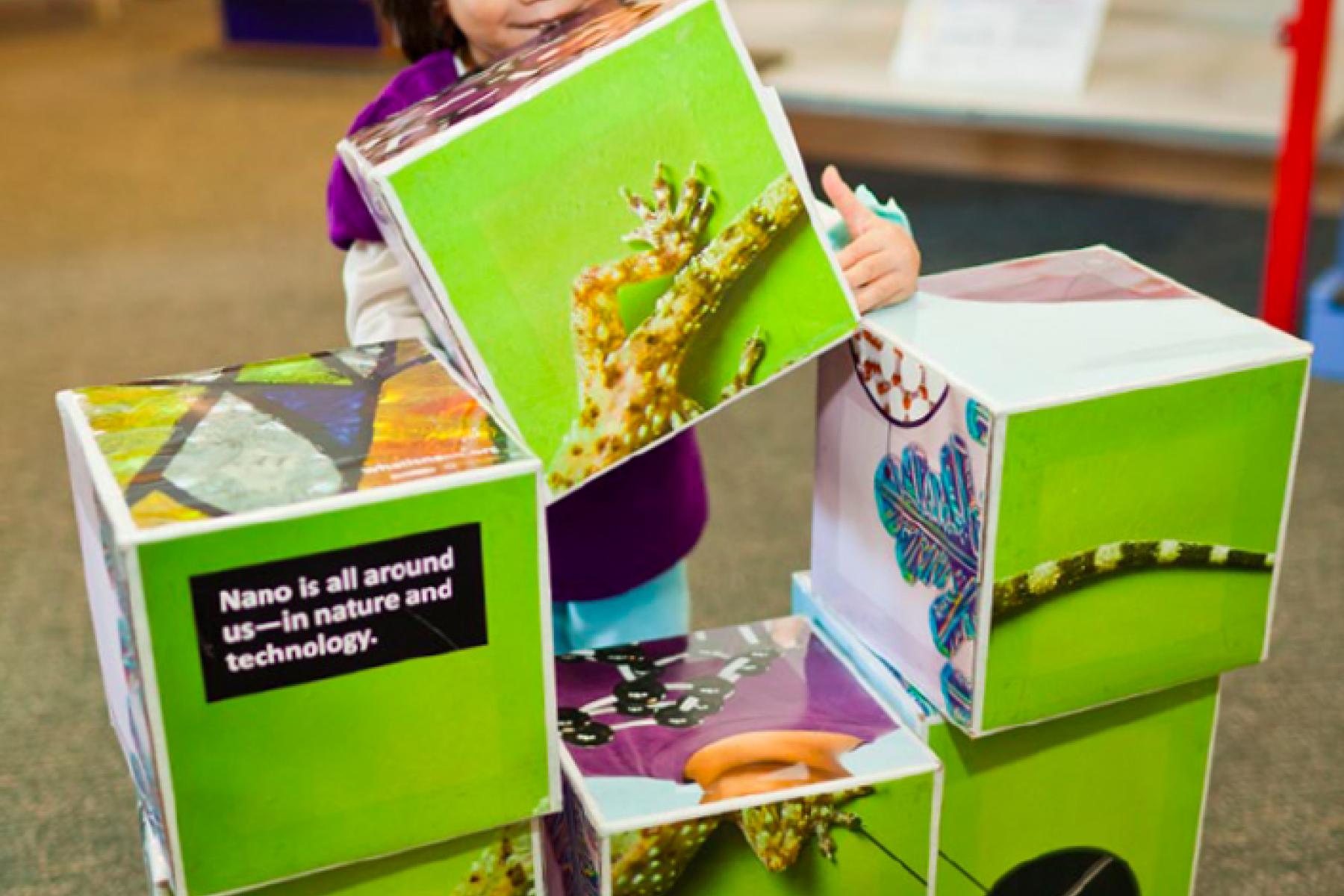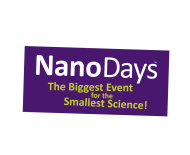DESCRIPTION
"Build a Giant Puzzle!" is a hands-on activity in which visitors assembly large cubes to make nano related images. They learn how different objects are related to nano.
DESCRIPTION
"Build a Giant Puzzle!" is a hands-on activity in which visitors assembly large cubes to make nano related images. They learn how different objects are related to nano.
TRAINING VIDEOS
OBJECTIVES
BIG IDEA
The way a material behaves on the macroscale is affected by its structure on the nanoscale
LEARNING GOALS
The way a material behaves on the macroscale is affected by its structure on the nanoscale
NANO CONTENT MAP
Nanometer-sized things are very small, and often behave differently than larger things do.
Nanoscience, nanotechnology, and nanoengineering lead to new knowledge and innovations that weren't possible before.
DOWNLOAD FILES
- Build a Giant Puzzle! - Guide (DOC)
- Build a Giant Puzzle! - Guide (PDF)
- Build a Giant Puzzle! - Sign (PDF)
- Build a Giant Puzzle! - Block Images (PDF)
- Build a Giant Puzzle layout for professional printing (PDF)
- Build a Giant Puzzle! - Sign (Spanish) (PDF)
- Build a Giant Puzzle! - Guide (Spanish) (PDF)
- Build a Giant Puzzle! - Block Images (Spanish) (PDF)
Credits
Sciencenter
Developed for the NISE Network with funding from the National Science Foundation under Award Numbers 0532536 and 0940143. Any opinions, findings, and conclusions or recommendations expressed in this product are those of the authors and do not necessarily reflect the views of the Foundation.
Creative Commons Attribution Non-Commercial Share Alike 3.0 United States (CC BY-NC-SA 3.0 US).
View more details

NISE Network products are developed through an iterative collaborative process that includes scientific review, peer review, and visitor evaluation in accordance with an inclusive audiences approach. Products are designed to be easily edited and adapted for different audiences under a Creative Commons Attribution Non-Commercial Share Alike license. To learn more, visit our Development Process page.


